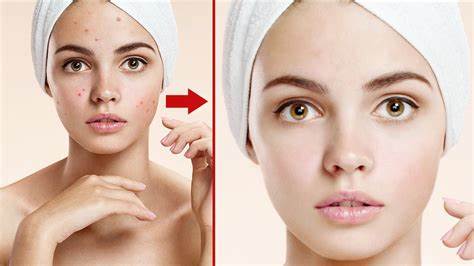Scars are a common occurrence for most people, whether it’s due to a childhood accident, acne, or surgery. While scars can remind us of our past experiences, they can also be a source of self-consciousness and lower our self-esteem. Fortunately, there are several ways to treat scars and improve their appearance. In this post, we’ll explore some tips for treating scars and using scar treatment cream to fade them.
Types Of Scars
Before we delve into the tips for treating scars, it’s essential to understand the types of scars that exist. There are four main types of scars: hypertrophic scars, atrophic scars, keloid scars, and contracture scars.
Hypertrophic scars occur when the body produces too much collagen during the healing process, resulting in a raised scar that remains within the boundaries of the original wound. Atrophic scars, on the other hand, result from a loss of tissue, leaving a depression in the skin.
Keloid scars are raised, thick, and extend beyond the original boundaries of the wound. These scars can be itchy and painful, and they can continue to grow over time. Lastly, contracture scars occur when the skin and underlying tissue pull together during the healing process, resulting in a tight, often uncomfortable scar. This type of scar is common among burn victims.
Tips For Preventing & Treating Scars
Keep The Wound Clean
One of the most crucial steps in treating scars is to keep the wound clean. Proper cleaning can help prevent infections and reduce the risk of scarring. When cleaning the wound, use warm water and a mild soap, and avoid scrubbing the area too hard. Pat the area dry with a clean towel.
If the wound is deep or has a higher risk of infection, such as a surgical wound, your doctor may prescribe antibiotics to prevent infection.
Protect The Wound
Protecting the wound is another crucial step in treating scars. Cover the wound with a sterile, non-stick bandage to protect it from bacteria and other harmful elements. Avoid using tape directly on the wound, as it can cause further damage.
If you’re dealing with a large wound or one that’s in an area that’s prone to movement, you may need to use a dressing or tape to keep it in place.
Use Scar Treatment Creams
Scar treatment creams are designed to help fade scars by hydrating the skin, reducing inflammation, and promoting healthy skin cell growth. These creams usually contain ingredients like silicone, Vitamin E, and other antioxidants that are known to improve the appearance of scars.
To use a scar treatment cream, first, clean the area around the scar, then apply a small amount of cream to the affected area. Massage the cream into the skin until it’s fully absorbed. Repeat this process at least twice a day, and continue using the cream for several weeks to see the best results.
Massage The Scar
Massaging the scar can also help reduce its appearance. Massaging helps to break up scar tissue, stimulate blood flow, and promote healing. To massage the scar, use your fingers to gently rub the area in a circular motion for a few minutes each day.
Laser Therapy
Laser therapy is another option for treating scars. This treatment involves using a laser to break up scar tissue and stimulate healthy skin growth. Laser therapy is typically used for more severe scars, such as keloid scars or burn scars.
During the procedure, the laser is directed at the scar tissue, which causes it to break down. The body then absorbs the broken-down tissue, allowing healthy skin to grow in its place. While laser therapy can be effective, it can also be expensive and may require several sessions to see significant results.
Surgical Scar Revision
In some cases, surgical scar revision may be necessary to treat scars. This procedure involves removing the scar tissue and suturing the wound closed. Depending on the size and location of the scar, your surgeon may use a skin graft or tissue expansion to help close the wound.
Surgical scar revision is usually reserved for more severe scars or scars that affect the function of the body, such as contracture scars. This procedure can be costly, and recovery time may vary depending on the extent of the surgery.
In conclusion, scars can be a source of insecurity, but with the right scar treatment techniques, it’s possible to fade them and improve the appearance of your skin. When using scar treatment cream, it’s important to use it consistently and for an extended period to see the best results. It’s also essential to keep the wound protected from the sun, as UV rays can cause further damage to the scar and delay the healing process.
If you’re unsure which treatment option is best for your scar, it’s always a good idea to consult with a dermatologist or plastic surgeon. They can evaluate the severity of the scar and recommend the best course of treatment to help you achieve your desired results.
Remember, while scars can be a reminder of our past experiences, they don’t have to define us. By taking care of our skin and using scar treatment techniques, we can fade scars and feel more confident in our own skin.





























